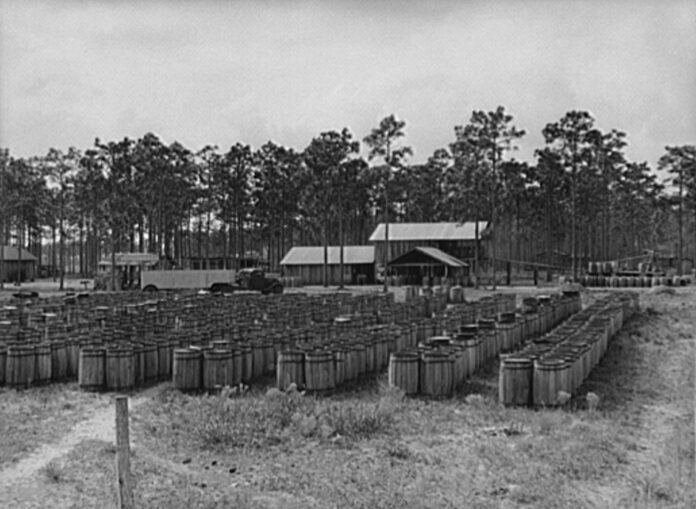by Linda Charlton
Gun control efforts today are driven at least in part by multiple mass shootings, many with AR-15 type weapons. A hundred and thirty years ago, the weapons raising eyebrows were Winchester repeating rifles.
January 30 was a big day in Florida for both gun control advocates and gun control opponents. Florida House Speaker Paul Renner announced that a bill had been filed in the House which aims to eliminate the need for concealed carry permits. On that same date, the ATF (Bureau of Alcohol, Tobacco, Firearms and Explosives) posted a ruling that in some cases, handguns with stabilizing braces are subject to the same regulations as short-barrel rifles.
The press release from the House on the gun bill reads in part that “Floridians shouldn’t need a government permission slip to exercise their constitutional rights.”
Speaking of the ATF ruling, ATF spokesman Erik Longnecker says “Traditional short-barrel rifles equipped with a shoulder stock and many SBRs with a stabilizing brace are functionally identical. Both variations are generally designed and intended to be fired from the shoulder as rifles. The [ATF] is the lead federal law enforcement agency responsible for enforcing the National Firearms Act which requires the registration of short-barrel rifles, and it is ATF’s duty to enforce those acts of Congress.”

The National Firearms Act dates from 1934. The very first gun control act in the State of Florida dates from 1893, and was a direct outgrowth of violence in the turpentine and logging camps.
That 1893 law says in part that “it shall be unlawful to carry or own a Winchester or other repeating rifle without first taking out a license from the county commissioners of the respective counties …. the person taking out such license shall give bond running to the governor of the state in sum of one hundred dollars …”
An amendment in 1901 added “pistol” to the short list of regulated weapons.
Turpentining in south Lake County started in the 1880s. The industry exploded locally after the Great Freeze of 1894-95, when land suddenly became dirt cheap. That’s when E.E. Edge brought his turpentine workers (predominantly African-American) down from Georgia and proceeded to become the biggest name in turpentining in what is now Groveland.
The workers apparently came well armed, the same being true of the workers who had come down a decade earlier.
The last best witness to violence in the camps in south Lake County was Ray Newman (1919-2007), who was born in the last of the south Lake logging camps. In an interview a few years before his death he recalled that on Mondays, a wagon would come to collect the bodies of workers who had died over the weekend. The dead white workers would be taken all the way to Groveland for burial. The dead black workers would be taken to the Pine Camp Cemetery, which was not so far north. Newman recalled that sometimes there would be four to five dead in one weekend, and there is a story circulating among some in the deep south Lake area that on one fateful Monday there were six.
That doesn’t mean that all were murdered. Available death certificates show that accidental deaths, such as being hit by a falling tree, were not uncommon. In addition, many died of such ailments as malaria, tuberculosis, and heart and kidney disease.
The most high-profile witness to violence in the camps — and to the related gun control legislation — was Florida Supreme Court Justice Rivers Buford (1878-1959). Buford started his working life in camp, at age 10, as camp cook. He shared his personal knowledge of camp life in a 1941 court decision (Watson v. Stone):
“The original Act of 1893 was passed when there was a great influx of Negro laborers in this state drawn here for the purpose of working in turpentine and lumber camps. The same condition existed when the act was amended in 1901 and the act was passed for the purpose of disarming the Negro laborers and thereby reducing the unlawful homicides that were prevalent in turpentine and sawmill camps and giving the white citizens in sparsely settled areas a better feeling of security … The statute was never intended to be applied to the white population and in practice has never been so applied.”
Beyond the testimonies of Rivers Buford and Ray Newman, there is one more testimony regarding the violence in the turpentine and logging camps of long ago. That testimony is in the collected death records pertaining to the early 20th-century African-American communities in the area. There were certainly camp deaths before the 20th century, but there are no death records available that early, outside of the few municipalities that had their own record-keeping system.
E. E. Edge had two separate cemeteries for his workers who were black. The southern camp is part of what is now a land bank. The northern camp, known as Oak Tree Union Colored Cemetery of Taylorville, is under restoration. Groveland was Taylorville before it became Groveland, and Oak Tree became the community cemetery for the African-American population of Groveland.
The current official count of bodies interred in Oak Tree (based on the latest ground penetrating radar data) is between 252 and 275. Most of the graves are unmarked. Though the cemetery is believed to have been established 1895-1900, the earliest records uncovered so far date from 1905. They are one (1) stabbing, one (1) shooting and one (1) death from illness. Of the approximately 200 adults who have been scrutinized as possible Oak Tree ‘inhabitants,’ eighteen (18) of them died by homicide. One of those was beaten to death with an axe handle. Seven were shot. Eight were knifed. And two of the death certificates merely say “murdered.” I






